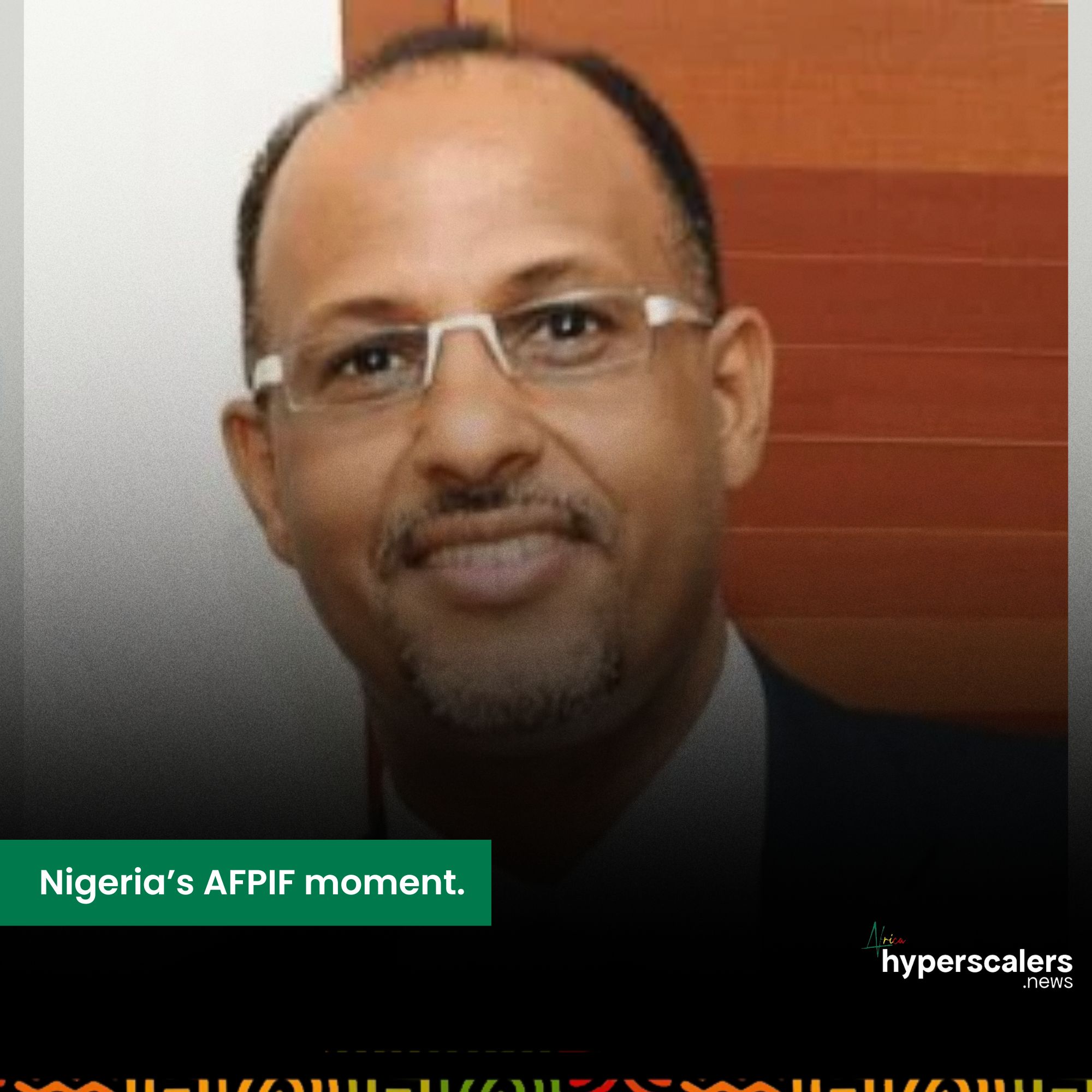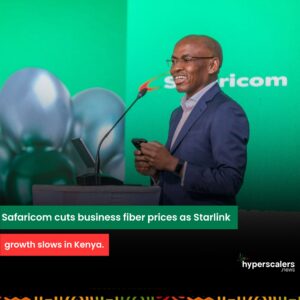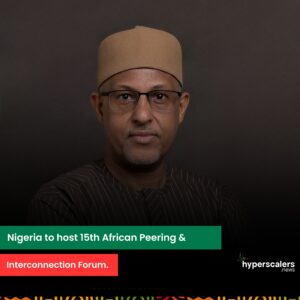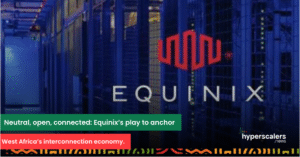In April 2025, the Internet Exchange Point of Nigeria (IXPN) quietly crossed a line that once felt unreachable – 1 terabit per second of peak domestic internet traffic. It was a technical milestone, though it was much more. It was proof that Nigeria’s internet was maturing, that data was staying home, and that the country’s exchange had stepped onto the continental stage.
The comparison is humbling and inspiring. DE-CIX in Germany, the world’s largest internet exchange, and home to hundreds of billion-dollar entities, recently celebrated 25 Tbps after three decades of growth. IXPN, barely 15 years in, is expected to hit 2 Tbps in 2025 and ranks among Africa’s top three IXPs.
The forces driving this rise are unmistakable: a booming digital economy, a growing online population, edge computing pushing workloads closer to users, and the coming wave of latency-sensitive AI models that will need to live inside regional clouds. Yet almost 70% of Africa’s internet traffic still takes the long way around, leaving the continent, bouncing through Europe or the Middle East, and returning. It’s an invisible detour that costs time, money, and opportunity: a student stuck in a lagging virtual class, a fintech app timing out mid-transaction, or even a board meeting at a large enterprise delayed by a lagging email.
No one understands this better than Muhammed Rudman, IXPN’s CEO. “Fifteen years ago, about 1% of internet traffic was localized,” he recalls. Even today, Africa’s fragmented infrastructure and dependence on far-off hubs inflict latency penalties, drive up bandwidth costs, and create geopolitical exposure as sensitive data crosses multiple jurisdictions.
The Internet Society (ISOC) has set an ambitious 50/50 target – to keep half of internet traffic local in key economies by 2025. Today, most of the continent is still under 30%. Nigeria, with IXPN’s growth, is showing what’s possible. Traffic that was once scattered and expensive is becoming efficient, sovereign, and increasingly local.
IXPN is now more than a piece of plumbing in the network. It’s an anchor for content providers and enterprises expanding into Africa, a catalyst for cloud adoption, and a platform enabling everything from streaming and gaming to financial services, telemedicine, and e-governance. As Rudman puts it: “For Nigeria, hitting this milestone means reducing reliance on international bandwidth, decreasing latency for local services, and strengthening our position as Africa’s digital heartbeat.”
But this moment is about more than traffic volume. If Nigeria is to become a true convergence point like the FLAP-D markets (Frankfurt, London, Amsterdam, Paris, Dublin) – it must build a fully integrated ecosystem where data centers, IXPs, subsea cables, cloud operators, content networks, and regulators work in sync to retain African traffic in Africa. That means moving from simple connectivity to connectivity plus convergence – where networks, content platforms (OTTs), payment systems, and enterprises are interconnected locally, and technology becomes the default engine for doing business.
But this milestone is a runway. From August 19 – 21, 2025, Nigeria will host AfPIF for the first time. On the surface, it’s a gathering of network operators, data center executives, and IXP managers. In reality, it’s a summit that can determine how Africa will connect, compete, and compute in the AI era. In the journey so far, we have seen the layers stack: first the networks, then the content providers, then the financial and payment ecosystems, and now the full spectrum of digital businesses. The next stage is to regionalise Africa’s connectivity – to interconnect Africans in Africa, by Africa, and with those committed to Africa’s growth.
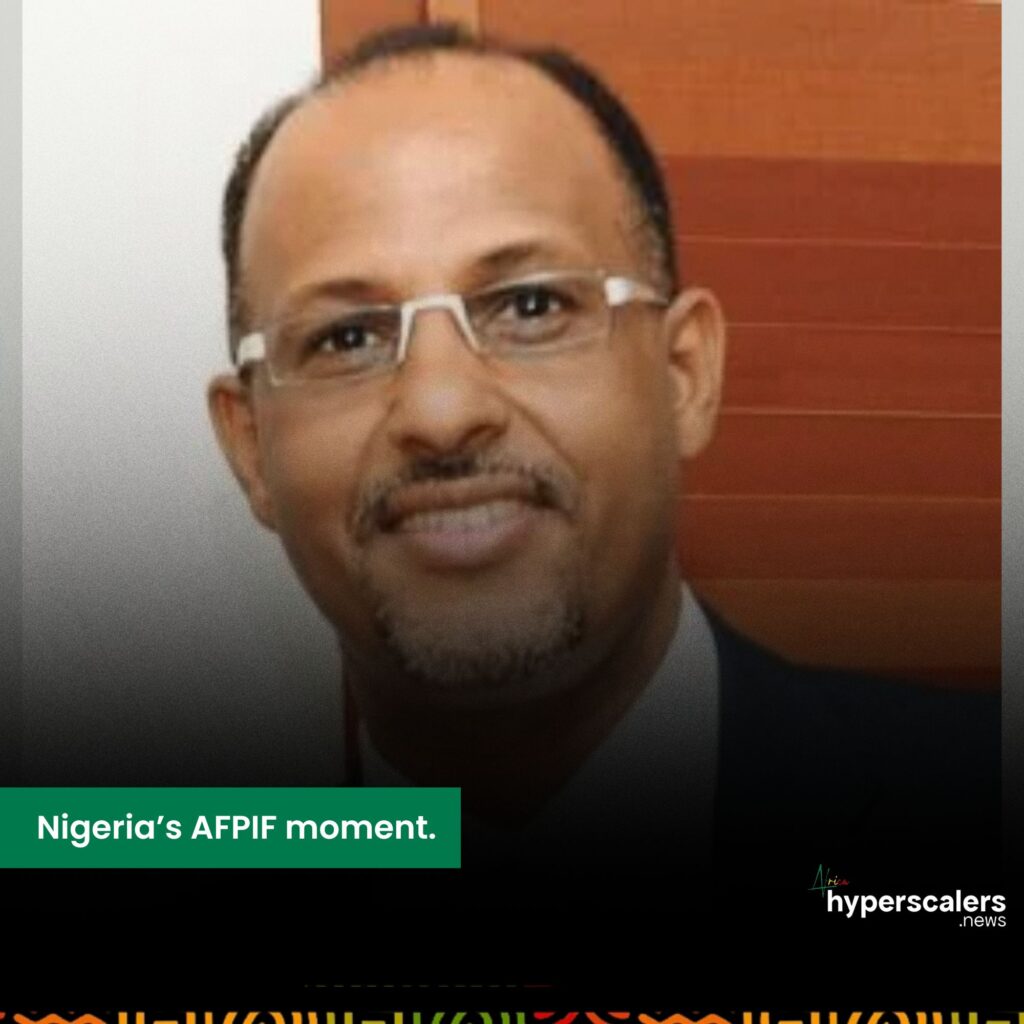
We are entering a world where hyperscale data centres draw as much power as small cities, where megascale AI models must live near their users, and where milliseconds mean millions in real-time markets. In that world, the connective tissue – peering and interconnection – becomes strategic infrastructure. IXPs stop being neutral meet-points and start being sovereignty enablers, cost reducers, and innovation accelerants. Data centers like Rack Centre become the secure, neutral marketplaces where this interconnection thrives.
And for local operators, AfPIF arrives at an inflection point. The numbers are impressive: almost 2 Tbps in Nigeria compared to 5 Tbps at NAPAfrica in Johannesburg, 8 – 15 Tbps in London and Amsterdam, and over 30 Tbps in Brazil. Data center density is also lowest at less than 100 MW. Closing that gap will require more than hardware. It means building deep peering relationships, expanding neutral colocation footprints, pulling Nigeria-owned data home into new data center buildouts, aligning regional routing strategies, and – above all – forging a culture of collaboration across the ecosystem. Lagos must evolve from West Africa’s main exchange to Africa’s interconnection capital.
The path forward is clear: expand neutral colocation facilities to host more peering nodes; align regulations to enforce traffic localization and sovereign cloud policies; create strong incentives for content, CDN, and cloud platforms to exchange traffic locally; invest in training the next generation of network engineers; and strengthen cross-border interconnection with Ghana, Senegal, Côte d’Ivoire, and the wider region.
AfPIF Lagos can be the catalyst. The Internet Society (ISOC) and the African IXP Association are bringing the institutional weight. Local hosts – the IXPN, Rack Centre and AF-CIX (DE-CIX) – are staging the show. Partners such as Open Access Data Centres, Meta, Digital Realty, Equinix, Telcables, Virtual Technologies and Solutions, AWS, LINX, AMS-IX, CSquared, TESPOK, TransmissionCo, PLURIUM Technologies, Workonline Communications, Global Gateway, NAPAfrica, FLEXOPTIX, DE-CIX, Akamai, UIXP, and Team Cymru are enabling the movement.
But the real work is in the outcome.
When the last flights leave Nigeria, AfPIF 2025 must leave behind more than headlines. It should mark the moment Africa’s internet stopped routing itself out of the continent – when latency dropped from milliseconds to microseconds, and the cost of doing digital business fell because Africa’s networks became truly African. History favors those who write it; this could be the moment Nigeria and Africa write their interconnection story.
In a world where economic power is shaped by compute density and bandwidth gravity, Nigeria stands at a crossroads. IXPN and its co-hosts Rack Centre and De-CIX have the credibility, the right partners, and AfPIF brings global momentum. The infrastructure is coming online rack by rack, but this is more than a milestone – it’s a call to anchor Africa’s internet in Africa. This is Nigeria’s AfPIF moment. It must be the turning point where we keep our traffic, our value, and our future at home. History will be written here. The question is: will we be the ones to write it?


